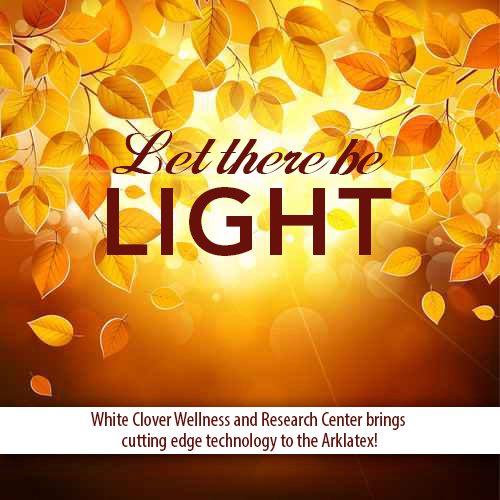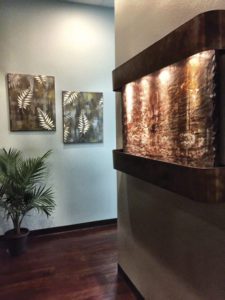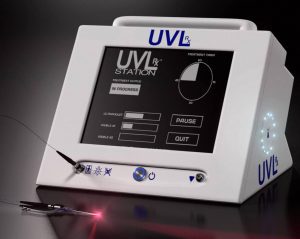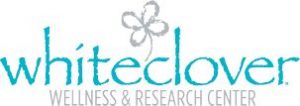LET THERE BE LIGHT!!
As a state of the art research facility located in Shreveport, LA, White Clover Wellness and Research Center, has brought cutting edge technology to the area. By partnering with UVLrx Therapeutics™ in Santa Barbara, California, White Clover is studying the potential healing power of light. The UVL1000 Treatment System used in clinical trials at White Clover is a new, investigational light therapy system that introduces low-light energy directly into the body by connecting to an intravenous (I.V.) catheter.
White Clover Wellness and Research Center began using the UVL1000 Treatment System in October 2015 and has performed over 1,000 treatments right here in the Arklatex. Subjects have traveled from as far away as southern Florida to participate in trials at White Clover. According to John Reeves, MD, Medical Director of White Clover, “The UVL1000 Treatment System is an investigational device that delivers specific forms of light intravenously through a regular I.V. catheter. The process is as simple as starting an I.V. and the treatment is administered for 60 minutes. The individual wavelengths of light administered during this session have been reported in independent studies to stimulate the body’s natural immune system and damage pathogens (viruses, bacteria, fungi) in the bloodstream. In addition, these individual wavelengths have been shown to reduce inflammation, increase energy, and improve blood circulation. With each wavelength having strong clinical support, White Clover is proudly evaluating, in clinical trials, the effect of delivering each wavelength simultaneously.
Light therapy works by activating photoreceptors found within cells. Photoreceptors convert light energy into chemical energy, which in turn, can transform a cell’s function and behavior. A change in cellular behavior modulates how it interacts with adjacent cells and tissue and can actually affect cells throughout the entire body by changing its release of hormones, proteins, and enzymes. Accordingly, light stimulation of a single cell can have profound therapeutic effects on the entire body.
For nearly 80 years, light therapy has been used across the globe to successfully treat a variety of diseases and infections. Various delivery methods of light therapy have emerged, which includes transdermal (outside the skin), intranasal (inside the nose), and extracorporeal. Extracorporeal light therapy requires a transfusion method by which a very small portion of the patient’s blood is removed and irradiated with a single wavelength of ultraviolet light and transfused back into the bloodstream. This age old technology was used for decades until it was ultimately supplanted by more modern therapies; however, the core benefit of light irradiation of blood has continued to intrigue researchers and has reemerged in medicine in different forms. Dr. Reeves believes there is a place for this technology in modern medicine for a variety of disease states as well as drug resistant infections.
The scientists and engineers at UVLrx Therapeutics™ have worked tirelessly to determine the exact combination of wavelengths to offer the most effective treatment session possible. There are several differences in the UVLrx System being studied at White Clover and the traditional light therapy systems. The UVLrx Treatment System™ does not require transfusion. The traditional systems only treated approximately 5-10% of a patient’s blood, but the UVLrx System is able to treat close to 100% of a patient’s blood as it circulates through the body during the treatment. In addition, the UVLrx treatment system administers three different wavelengths of light concurrently during a 60 minute session.
This advancement of Ultraviolet Light therapy was made possible by the development of the UV LED light just a few years ago. By integrating this light source with the proprietary optics engine, the UVLrx team of engineers and scientists were able to yield a very specific and consistent dose of light without the thermal effects of a traditional light source.
Existing published research have demonstrated a basic effect of each of the three wavelengths of light administered by the UVLrx Treatment System™:
UV-A (365nm) – Damages and delays replication of pathogens, such as bacteria, viruses and fungi, in the bloodstream1
Visible Red (635nm) – Reduces inflammation, Increases ATP energy production of cells, improves white blood cell activity and accelerates cell repair2
Visible Green (530nm) – Increases blood flow and the delivery of Oxygen to tissues by improving the flexibility of red blood cells3
UVLrx Therapeutics™ received a CE Mark for their UVL1500 Treatment System, a separate treatment model currently available in Europe. The UVL1500 CE Mark, and only available in Europe, covers the following indications:
- Reduction of Pain*Improved ATP Synthesis*
- Reduction of pathogens in the blood*Improved Wound Healing*
- Reduction of Inflammation*Improved Blood Oxygen Transport*
- Immune System Modulation*Improved Circulation*
White Clover is proud to have been named a UVLrx Center of Excellence. Clinical trials performed at White Clover Wellness and Research Center in Shreveport have been published in international journals and magazines and the results have been presented at medical conferences. White Clover looks forward to partnering with other cutting edge medical device companies to bring new medical technology to the Arklatex.
- Amy Reeves, RN
- Bethany Crosby PA-C
*These indications of use represent the UVL1500 Treatment System Model ONLY, and not the UVL1000 Investigational use only model being used at the White Clover Research Center. The UVL1000 has not been proven safe or effective for the treatment of any medical condition or disease and is currently an investigational use only device.
- Girard PM, F. S. (2011). UVA-induced damage to DNA and proteins: direct versus indirect photochemical processes. J. Phys: Conf Ser, 261, 1-10.
- Chen CH, Hung HS, Hsu SH. Low-energy laser irradiation increases endothelial cell proliferation, migration, and eNOS gene expression possibly via PI3K signal pathway. Lasers Surg Med. Jan 2008;40(1):46-54.
- Kassak P, Sikurova L, Kvasnicka P, Bryszewska M. The response of Na/K-ATPase of human erythrocytes to green laser light treatment. Physiol Res. 2006;55:189-194






